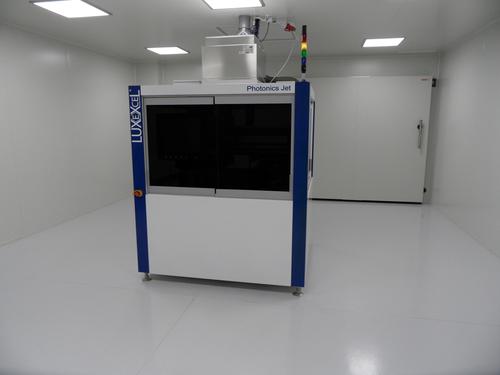Update: 3D-Printed Optics From New Material, Process
October 29, 2014

Right after finding that 3D-printed telescope we just told you about, we saw this update on the 3D-printed eyeglasses we reported last year. Those eyeglasses were made by Dutch company LUXeXceL, which had 3D printed complete pairs to demonstrate their process for printing plastic lenses and other non-imaging, optical-quality components.
Now the company has launched both an improved clear polymer material for 3D printing optical components and a high-speed, precision, 3D-printing process for making small- and medium-sized batches of components in a few days. LUXeXceL says the combination, which it offers as an online service, competes with injection molding for prototyping and manufacturing optics, while eliminating the need for expensive tooling.
LUX-Opticlear, the new UV-curable acrylic sheet material, can be used to manufacture components up to 20 mm high. According to the company's website, the clarity of the new material is greater than any other 3D-printed material, with an internal transmission of 96.9%. You can access a material spec sheet here.
The new process is based on the company's Printopical technology, which was used last year to make the eyeglasses. That additive manufacturing process, derived from modified wide-format industrial inkjet printing methods, prints lenses with smooth surfaces from CAD files. It requires no post-processing steps, such as grinding or polishing. The new process platform's software accepts different types of CAD files uploaded by users, which it then automatically reprocesses into specially formatted print files.
LUXeXceL has used Printopical technology for making Fresnel lenses, window treatments and foils, digital art, and advertising graphics in addition to the eyeglasses. Its main focus has been making rapid prototypes, small batches, and some higher volumes of LED optical components, structures, and diffusers, mostly for the lighting industry. The company says the standard method in that industry has been injection molding of LED optics, to reduce cost, complexity, and time.
But the new LUX-Opticlear process may be able to beat even those costs. Producing a part starts at 500 euros, about $637, and iterations each cost 20% of the initial quote. Users can upload 3D CAD files to a secure part of the platform and get a quotation for production of the file, based on its specifications.
Related posts:
About the Author(s)
You May Also Like



